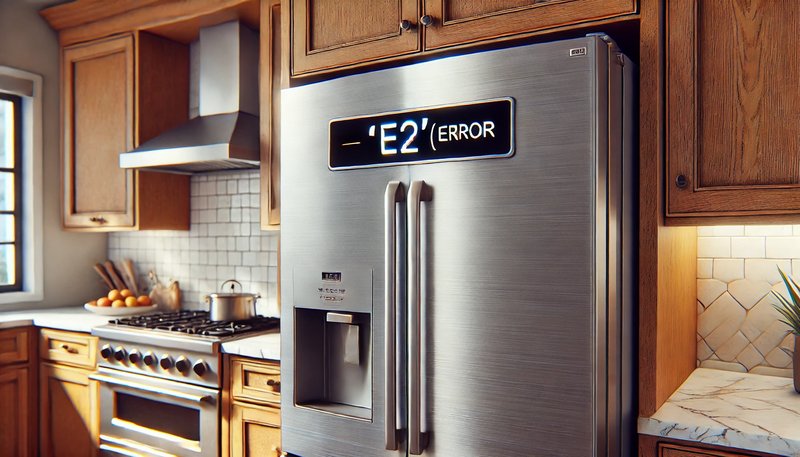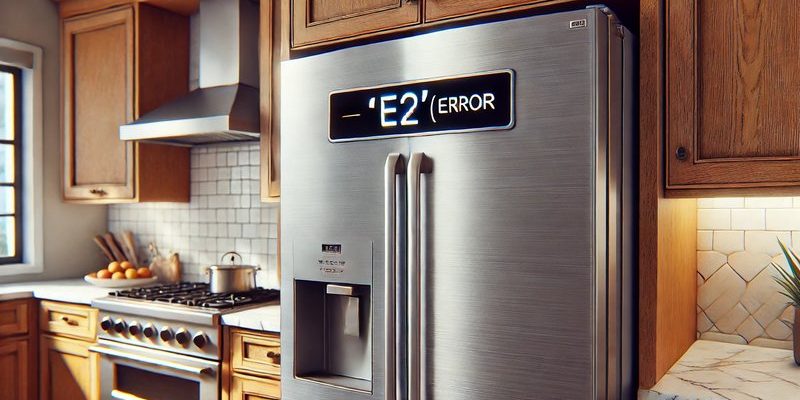
You see, modern appliances like your GE refrigerator are quite smart. They’re designed to help you catch problems early on—before they become serious issues. When you see error code E2, it’s not just a random combination of letters and numbers. It’s a specific message that helps you understand what’s going on inside your fridge. Let’s dive in and decode this message so you can get back to enjoying your fresh groceries without any interruptions.
Understanding the E2 Error Code
When your GE refrigerator displays the E2 error code, it’s essentially a call for help. This code generally indicates a problem with the refrigerator’s thermistor. You might be wondering, “What in the world is a thermistor?” Well, think of it as a type of sensor that helps your fridge monitor temperature changes. Just like a thermostat in your house keeps your indoor climate comfortable, the thermistor ensures that your refrigerator stays at the right temperature to keep your food fresh.
In practical terms, if the thermistor isn’t working correctly, your refrigerator might not be cooling properly. This could mean anything from slightly warm milk to spoiled groceries. In some cases, the fridge might even be too cold, freezing items that you only wanted chilled. So, recognizing and addressing the E2 error promptly is key to maintaining your fridge’s performance and ensuring your food stays in top condition.
Here’s the deal: The E2 error is your signal to check the thermistor. Sometimes, it might just need a reset, but other times, it might need replacement. By addressing the error code, you’re not only fixing an immediate problem but also preventing future issues that could lead to more costly repairs or spoiled food.
Troubleshooting the E2 Error Code
So, what do you do when you see this error code glaring at you? First off, don’t panic. Just like a tech-savvy detective, you can follow a series of steps to narrow down what’s wrong. Start by unplugging your refrigerator for about 30 seconds and then plugging it back in. This simple action can sometimes reset the system and clear the error code. Think of it like rebooting your computer or smartphone when it starts acting weird.
If the code persists, it’s time to dig a bit deeper. Locate the thermistor, which is often found near the evaporator coil behind a panel inside your fridge. Check to see if it’s secured properly and not covered in frost or debris. A dirty or frosty thermistor can give false readings, leading to incorrect temperature regulation.
After inspecting it, you might need to test the thermistor’s resistance with a multimeter. This part sounds technical, but it’s like checking the battery charge in a remote control. If the readings are off, it’s likely time for a replacement. Don’t worry, replacing a thermistor is typically straightforward and often an inexpensive fix that you can do yourself with a bit of guidance.
Preventing Future E2 Errors
Now that you’ve tackled the E2 error, let’s talk about keeping it from happening again. Regular maintenance is key. Just as you wouldn’t skip oil changes for your car, maintaining your fridge can prevent a lot of hassles down the road. Clean the coils, check the seals, and keep the vents clear. A little housekeeping can go a long way in keeping your refrigerator running smoothly.
Another tip? Avoid overloading your fridge. Cramming it full can block air circulation, affecting temperature regulation and potentially causing errors like E2. Imagine trying to run a marathon while wearing a backpack crammed with bricks. It’s the same for your fridge—it needs room to breathe and function efficiently.
Finally, keep an eye on the temperature settings. Setting your refrigerator at the recommended temperature (usually around 37°F for the fridge compartment) can help keep the thermistor happy and error-free. By staying proactive, you’ll extend the life of your refrigerator and avoid those pesky error codes in the future.
In summary, encountering an E2 error code on your GE refrigerator might be inconvenient, but it’s also an opportunity to nip potential problems in the bud. By understanding what the code means, troubleshooting appropriately, and maintaining your fridge regularly, you’ll ensure that it runs smoothly, keeping your food fresh and your mind at ease.
